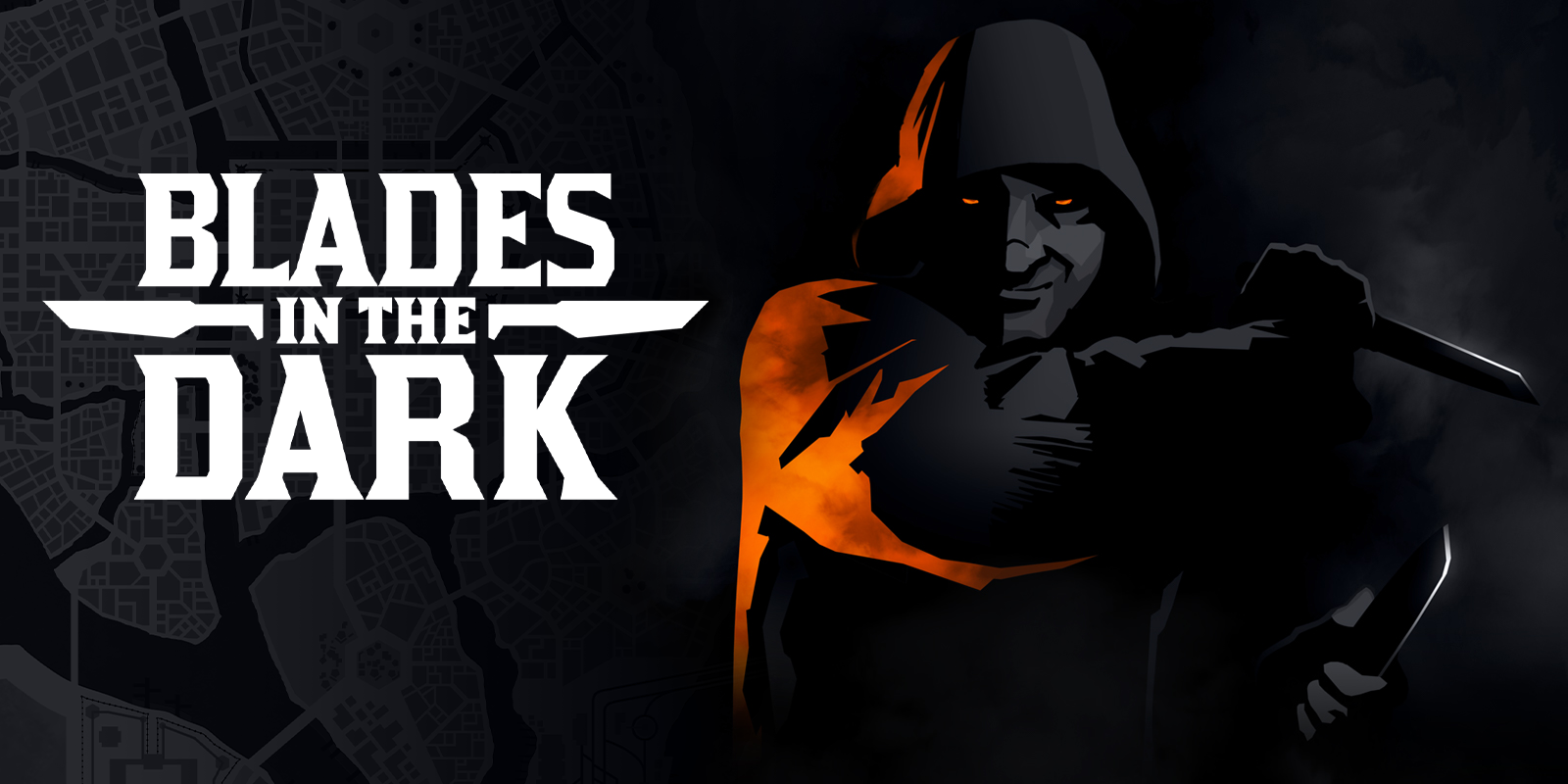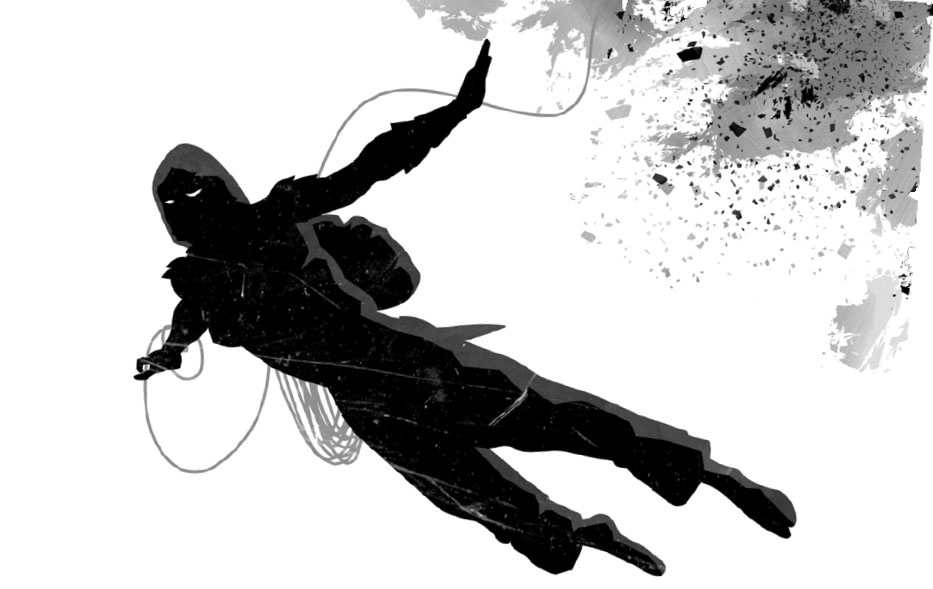 |
| Image by John Harper 2017 (c) |
[8 min read]
I've joined a local RPG group and we've decided to rotate Game Masters and try a bunch of new systems - perfect for my 2023 RPG Crawl! First up, Blades in the Dark. From the author himself:
Blades in the Dark is a game about a group of daring scoundrels building a criminal enterprise on the haunted streets of an industrial-fantasy city. There are heists, chases, escapes, dangerous bargains, bloody skirmishes, deceptions, betrayals, victories, and deaths.
This is a narrative-first game based around a d6 dice pool system, where 1-3 is failure, 4-5 success with a complication, and 6 is a success. The Game Master (GM) doesn't roll any dice, but after hearing what the player is trying to attempt with a certain skill, sets the position (level of risk) and effect (level of impact) of the check. Then player and GM narrate the consequences together after the roll.
My play experience
Our GM ran a three session mini-campaign, of which I was travelling for the second session. So these impressions are based on my two 3 hour sessions with 5 players, in person, using theatre of the mind (no maps, no minis).
Character creation
Character creation was fast - around 20 minutes or so - choosing my archetype, name, background and key contacts, then allocating my skills.
I played Wester Welter, known as "The Whip". Wester is a stealthy scoundrel, whose archetype is known in the game as a Lurk, and I focused on Prowess skills like Finesse and Prowl, and chose Daredevil as my special ability, allowing Wester to perform superhuman feats of athleticism. To round out Wester I also chose to be able to do some fast talking, taking some ranks in Sway.
These skills helped Wester in his entry level career as a warehouse worker in the docks district of Doskvol (the main city of Blades in the Dark), and he used them to steal and fence contraband to support his gambling habit. Before he started runing with a group of other scoundrels, that is.
Adding to the simplicity of creation - you don't choose equipment. Before starting a "score" (the action part of the heist-style missions) you assign a load of Light (1-3 items), Medium (4-5 items), or Heavy (6 items) and throughout the mission you can add items that you need on the fly, as if you had prepared them earlier, up to your load. A cool mechanic that speeds up character creation and gameplay, as you don't need to meticulously plan your equipment before jumping in.
 |
The Lurk - a stealthy infiltrator and burglar
Image by John Harper 2017 (c) |
Gameplay
For the first session our group of ne'er-do-wells overheard some rumours of treasure in a shady bar, delivered in a drunken stupour by a former security chief for a wealthy noble. After a short time discussing how we would infiltrate, find and extract the loot, the GM decided that Free Play was over and that the Score should start. And luckily he did, because we could have spent a lot more time agonising over different options, and this way we jumped into the action quickly.
 |
Image by John Harper 2017 (c)
|
The wealthy noble's manor was inhabited with both the living and the dead, making this location for the heist a creepy blend of steampunk and horror. We proceeded to talk our way through security, stealth around the manor, discover an ectoplasm harvesting operation and bump into the lord and lady, both ghosts with their own motives. The session culminated in finding the "loot" - a chest which turned out to be a supernatural prison for a former queen, betrayed and killed by usurpers. Since one of our characters was a fervent follower, he convinced us to swear allegiance and became a cult to the dead queen. And so "The Bluebloods" were born.
The newly formed Crew chose a boat with a secret mooring as their base, formed alliances (upsetting the dock workers in the process), and then set about tracking down five of the queen's betrayers. In the final session they followed one of these, a noble woman, into a seedy establishment to confront her, only to find she had made a dangerous bargain with a demon. Subduing their target, they secreted her back to their base for questioning, treading a fine line between risking her possession by said demon and also the dead queen's thirst for vengeance against a betrayer. The tense scene ended with one of the scoundrels, a bespectacled little old lady who wanted to avoid violence between her crew members, pointing her shotgun-umbrella at the target's head and pulling the trigger...
 |
| Image by John Harper 2017 (c) |
What I liked
Tone and setting
Doskvol is a Victorian-era city in perpetual darkness, haunted by ghosts but kept safe by encircling towers of crackling lightning. The technology that powers these and other inventions needs large metal ships to harvest enormous quantities of leviathan blood as fuel, in an homage to the Dishonoured video game series. This is a fantastic location for players as scoundrels and criminal heists, and our GM did a great job in evoking a bleak and spooky tone.
Progress clock
The progress clock, a simple circle cut into four, six or even eight segments, is a way for the GM to abstract complex problems into tangible chunks of progress that players can achieve. For example, the complex problem might be routine patrols, and the players might use several methods to overcome then, such as surveying their movements, causing a distraction, then moving through a hidden location etc. Each of these might require rolls to achieve progress, and when the clock is full, the problem has been resolved (in this case the party has moved past them unseen).
There are alternative methods of using clocks. In the example above, perhaps the clock represents the watch's time until they come back to the party's location, and the players need to overcome an obstacle (or steal the loot) before they return. Each action might push forward the clock, and if they don't resolve things before the clock is filled, the patrol arrives to find them. The humble clock can serve to escalate tension as well as demonstrate tangible progress to the players.
Equipment and flashbacks
As discussed earlier, you only need to choose your Load before you start the Score, not individual equipment, which gives you plenty of flexibility when executing your heist. Need lockpicks and still haven't designated your full Load's worth of equipment? Just add it to your sheet when you need it!
Flashbacks are a similarly innovative tool that allows you to take on Stress (a core resource for the game) in order to have a narrative moment that precedes the current mission and helps progress it. E.g. you find a strange symbol that no one can read, and you suggest to the GM (who helps arbitrate the Flashback) that you've actually come across this before in a prior mission and had it translated. If the GM agrees, they will reveal the symbol's meaning and you add Stress to your character.
In a heist-centric game, these two mechanics enable the story to progress fluidly for the characters, without the players having to plan out every detail meticulously ahead of the Score.
The Crew
The game's clear structure includes downtime, and a meta character that represents the party, called a Crew. While I wasn't present for the second session where "The Bluebloods" were established, the fervour with which the other players debriefed me was infectious. We have a group archetype, a secret lair, reputation with various factions, a special ability, shared money, and a path to upgrade the Crew between sessions. This is in contrast to other systems where the GM has to homebrew these types of rules.
 |
Our party chose Cult as the type of "character" for our Crew
Image by John Harper 2017 (c) |
Concerns I had
Conflict resolution system
This was my first truly narrative-first tabletop RPG, so the rules and dice rolls didn't come up as often as in other systems I am used to like D&D 5E. While I really enjoyed the back and forth banter between players, I was only called on for a few checks each session, and thus didn't really grasp the core resolution mechanic in the game. It added gravity to those moments, but overall felt less like a game, and more like group story-telling (which is the designer's intention).
Theatre of the mind
Which brings me to my next point - my main TTRPG experience is with games where combat is important, and is resolved using battlemap and miniatures, being tactically crunchy. We played Blades in the Dark totally using theatre of the mind, without any real combat, with my only anchor in the world being some brief description from the GM and my imagination. It certainly stretched me out of my comfort zone!
What I would bring to other games
What would I steal from Blades in the Dark for other games, principally my future D&D 5E campaigns?
- If running a heist, I might use flashbacks and equipment choices on-the-fly for that session only
- The progress clock seems a fairly simple and universally applicable tool to adopt
- Doskvol, the city itself, would make a great setting for a story arc in a darker style campaign
In summary
Blades in the Dark and our GM (who did a great job improvising from very few notes) provided an excellent entry point into narrative-first, rules light systems and I thoroughly enjoyed the back and forth banter amongst the party. I'd like to try my hand at GMing such a system in the future, and have my eye on Ironsworn.
What comes next for this group? It's time to try our hand at something more tactical and traditional fantasy, so I am prepping to run Dungeon Crawl Classics and eager to see what gonzo antics the players come up with...





Comments
Post a Comment